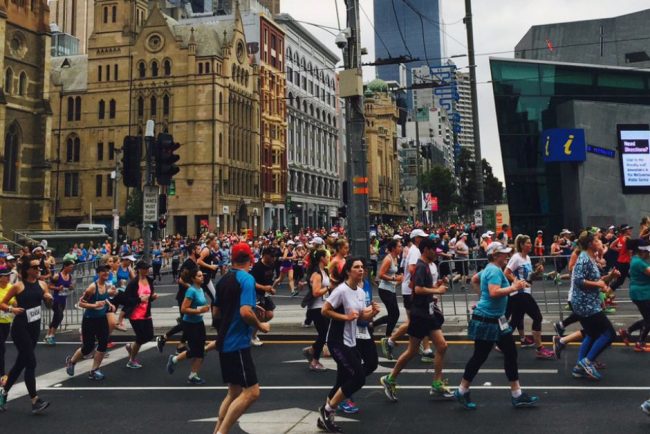The Importance of Resistance Training in Running
Published on
06 Sep 2019

Call us on: (03) 9975 4133
With Melbourne Marathon just around the corner our latest blog looks at how and why resistance training can help improve your running.
Running has become an integral part of millions of lives around the world. For many of us who enjoy the benefits of running and the ability to head out and pound the concrete foot after foot often describe the moment as a true sense of freedom and mental clarity. However, for many runners, beginner to advance, a colossal 35 – 80% per year will experience the aches and pains of injuries.
We know as fanatics of sports to improve we must practice our skills to achieve mastery. Yet, why do we rarely consider the benefits of resistance training as a tool to aid in the search for mastery of running. It has become evident within the research resistance training is an incredibly valuable tool for runners to not only improve running economy, neuromuscular coordination and power but aid in the reduction of injuries.
3 Benefits of Resistance Training
1.Increased Running Economy.
When we discuss running economy, we simply mean how effectively or efficiently one utilises oxygen throughout the body to working muscle groups while running at a certain pace. A more common view to this is an analogy of imagining how well our cars use fuel at certain speeds while driving.
Although the exact definition of the underlying mechanism of why resistance training improves running economy has not been fully defined within the literature. There are at present multiple theories that contribute to how resistance training influences running economy. However, the most widely accepted is the adaptation to the Stretch Shortening Cycle or (SSC).
The SSC is a spring like mechanisms that as it is lengthened (eccentric phase) will begin to amount tension and store elastic energy until a moment of translation occurs (amortization) within the SSC. As this spring is released energy is expelled through the shortening phase (concentric) and thus propelling us forward. It is believed resistance training creates plastic changes (stiffness) leading to an improved translation of ground contact reaction force to forward propulsion. Simply we become more efficient with our energy with every stride we take.
2. Improved Neuromuscular Coordination and Power.
Based on the Specific Adaptations to Imposed Demands (SAID) principles. The human body requires specific and progressive stress to be applied to the body not only physically but neurologically as well to improve. Neuromuscular control is the ability of our nervous system to not only efficiently recruit a group of muscles but the optimal number, type and firing sequence to maintain repeated contraction and relaxation cycles without fatigue. Thus, the importance for an individual to develop neuromuscular coordination and power will result in less fibres being used to run a certain pace, less fibres being recruited will result in a lower oxygen demand and efficiency.
3. Reduction in Risk of Injury.
It has long been understood and globally recognised amongst professionals that the benefits of resistance training in all sports including running can aid in the reduction of injuries. Studies have demonstrated a 50% reduction in overuse injuries. That being said when we view running as an entity on its own an easy to use rule that can apply within distance running is a progressive and gradual overloading of mileage, 3-10% increments to aid in the risk of overuse injuries. Resistance training is simply utilising this progressive overload with heavier loads to create changes within muscles, tendons and joints to become preconditioned undergoing structural changes to improve injury resilience. We need to remember we are biological and will adapt based on our training schedules, but it is the effective utilisation of progressive overload that allows our bodies to become resilient to the repeated bouts of running.
Example Programme Snapshot:
| Day 1 | Light Resistance Training Session:
Goal to concentrate on movement patterns and technical ability. |
| Day 2 | Tempo Run 20 – 30 minutes:
Goal to work at intensities equal to lactate production = lactate clearance. |
| Day 3 | Easy Morning Run (Primer) For Night Session:
Goal to concentrate on explosive power resistance training session. |
| Day 4 | Rest Day:
Active Recovery (Gentle Walk) |
| Day 5 | Tempo Run:
20 – 30 minutes: Goal to work at intensities equal to lactate Production = lactate Clearance. |
| Day 6 | Easy Run. |
| Day 7 | Long Run. |
Happy Running!


